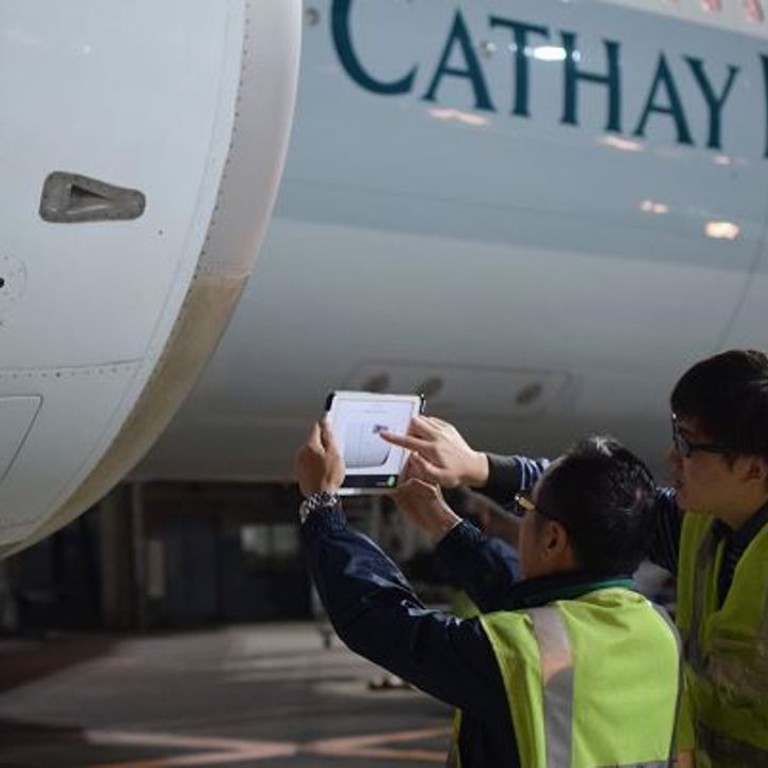
Drone-based maintenance checks on the cards for Cathay Pacific as airline chases greater digitisation
Airline also working on smart reusable luggage tags and a tool to help travellers manage their jetlag, among other measures to ease passengers’ pain
Drones that can check an aircraft for faults, smart luggage tags that can be used over and over, and a tool to help travellers manage their jetlag are among the latest ideas being bandied about and tested by Cathay Pacific.
The airline established an innovation centre in 2013 to develop new technology for staff and passengers. It has since come up with smartphone apps for use in handling air cargo, and electronic flight folders that crew members can use on portable tablets.
Its defect-detection project was developed in collaboration with ground crew to measure and take pictures of problems with the aircraft to help engineers. At present, the programme uses tablets, but it is now testing out mounting these on drones.
“We’ve got our engineers field-testing the tablets now. Once we know that the tablets and the technology works, in parallel we are building out the algorithms for the drone,” said Bidyut Dumra, manager of the Innovation Centre.
Cathay is not alone in developing maintenance technology using drones. In 2014, budget airline easyJet announced plans to use drones to inspect aircraft for damage after lightning strikes.
In June, easyJet said it had successfully tested the drone inspection process and it was able to reduce the inspection time from a full day to a few hours, adding that it planned to use the drones across Europe in 2016.
Despite the potential of using unmanned flying vehicles for aircraft maintenance, the technology still faces challenges.
“The simple thought of having a small object flying around something that costs so much money makes a lot of people very, very nervous, so there’s a host of regulations that we need to go through,” Dumra said.
The centre holds design challenges and hackathons to inspire innovation among staff. Dumra’s team has been given room to test prototypes before seeking approval from company executives, he said.
While Cathay has built a team dedicated to turning ideas like these into usable daily tools, all new concepts must work in conjunction with existing technology and be easily applied in less advanced airports, Dumra said.
The airline’s plan to use paperless luggage tags is a good example of this, as testing has shown there is still a desire for the tags to have a screen displaying the barcode, the company said.
“For my bag tag, I went to three different airports when I was doing my trials. One was fully automated, one was semi-automated, one was full paper. I have to make the bag tag work in the lowest common denominator.” Dumra said.
Each year, the airline prints 18,000 kilometres of traditional baggage tags for its 32 million passengers.
Cathay is working the International Air Transport Association, an industry trade body, to develop the tags and create an industry standard as other carriers are also working on the technology.

